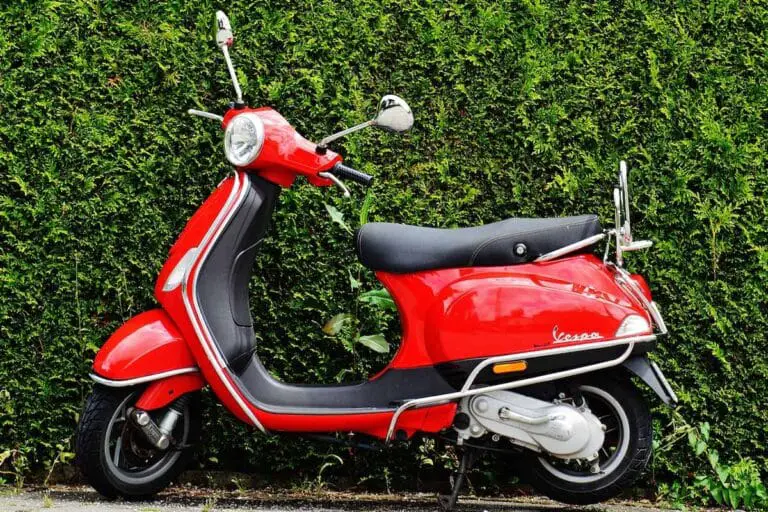Air Cooled vs Liquid Cooled Motorcycle
Disclosure: We may get commissions for purchases made through links in this post.
With the advent of high-tech two-wheelers with both contemporary and tried-and-tested engine designs, the heated debates around air-cooled vs. liquid-cooled motorcycles no longer exist. Nowadays, everyone is a happy camper with their respective choice of wheels.
However, note that friendly discussions about the benefits of the two layouts have yet to die down. Let us join the bandwagon as we go over the lowdowns of each engine type in today’s article.
Given similar piston displacements, air-cooled and liquid-cooled motorcycles differ in their impact on engine performance, weight, longevity, and maintenance. These aside, the two engine types also differ in service intervals, effect on fuel economy, and emissions compliance.
You may have heard or read this numerous times, but I will say it anyway, “there is no singular universal approach to doing anything,” including determining which engine cooling system is superior over the other.
And while this statement stands true, this guide will cover the pros and cons of air-cooled and liquid-cooled motorcycles – in the hopes of getting close to rightfully determining the engine layout that works best for you!

Significance of the Cooling System
Perhaps, the reason behind the ongoing contestation around different cooling systems is that they play a crucial role in the internal combustion of a two-wheeler (or any other vehicle, for that matter).
A bike owner does not have to be a rocket scientist to understand that combustion (which burns air-fuel mixture in the engine) generates two types of energy. One of them is heat – which, when trapped inside the engine, becomes detrimental to the smooth operation of a motorcycle.
Heat energy needs to be released so as not to escalate into engine overheating. And this is where cooling systems come in. Whether air, liquid, or oil-based, the mechanism is designed to dissipate heat. But heat dissipation would need to take place in the quickest time possible for the latter to be considered efficient and effective.
Air Cooling Systems
Origin: Air-cooled engines were initially used in automobiles as early as 1902. But the first-ever air-cooled motorcycle was presumably conceptualized in 1894, the same year that Hildebrand & Wolfmuller started to create diagrams of motorcycles with internal combustion engines. However, mass production of similar engine and motorcycle designs did not happen until 1896.
An air cooling system uses natural or atmospheric air to cool down the engine, although it still requires small amounts of liquids to do so.
Air-cooled engines dissipate heat energy through air circulation (a.k.a. convection heat transfer). The process is done with the use of fins – “thin extrusions or appendages attached to a larger structure or component” (in this case, the structure being the engine). Fins broaden the surface area where dissipation happens, thus increasing air circulation and accelerating heat transfer.
Liquid Cooling Systems
Origin: Liquid-cooled engines came much later and out of necessity. Specifically, the transition from air to liquid cooling happened at the onset of WWII – military personnel needed much more reliable vehicles with no boiling engines and leaking seals. As for motorcycles, it is quite absurd whether Suzuki’s 1971 GT750 is the world’s first liquid-cooled motorcycle.
A liquid cooling system does away with fins and oil coolants. Instead, it uses a mixture of water and a specialized liquid coolant (ethylene glycol or anti-corrosion, anti-foam, and anti-freezing properties) specifically designed to cool down the power mill.
Water jackets inside the engine (placed along the cylinder head and the cylinder) facilitate the flow of the specialized liquid coolant. The latter, in turn, absorbs heat produced by the engine.
Once the liquid coolant transfers heat from the engine, it flows through a radiator (usually positioned under the fuel tank) and cools down. To an extent, you can say that an air-cooled system and a radiator are operationally the same because they both function with the aid of air circulation. The only difference is that the radiator cools down the liquid coolant, not the engine.
Which Is Better – Air Cooled vs Liquid Cooled Motorcycles

Choosing which engine layout works best for your motorcycle is a personal preference. But the intended application (plus other considerations) is more significant when it comes to cooling systems.
While both cooling systems are effective in their own right, certain facets – like displacement, for instance – may cause you to prefer one over the other. Let us review these factors in greater detail in this section:
Mechanism
Often dismissed as a minor detail by the average consumer, a cooling system’s mechanism is one of the topmost considerations of mechanically inclined riders. Why is this the case? Well, the cooling system’s mechanism determines the effectiveness of the cooling system itself and the complexity of potential repairs (in the event the system becomes compromised).
To cite an example, one need only deal with fins when an air-cooled engine starts to overheat. Meanwhile, there are more components to work with for liquid-cooled power mills.
Application and Performance
Because of its design and function, a cooling system’s cooling capacity is among many motorheads’ greatest (if not the greatest) considerations. This is mainly true if the motorcycle is intended for more than the usual daily commute and weekend adventure.
Riders will go for a cooling system with faster heat dissipation rates if they ride hard and often. Conversely, some would opt for a cooling system with slower heat transfer rates if they mostly do short-distance leisurely riding.
Engine Displacement
Of all the items in this section, displacement is a limiting factor when choosing an engine layout. Certain displacements are already equipped with either air-cooled or liquid-cooled engines from the factory.
Liter-class and high-performance bikes, for instance, almost automatically come with a liquid cooling system due to the requirements of their power mills. On the other hand, air-cooled engines are typically found in smaller-displacement thumpers.
Servicing and Repair
As established earlier, ease of servicing or repairing a cooling system follows its mechanism and design complexity. Not only are air-cooled engines easier to work on, but they are also easier to diagnose.
This bit is crucial in resolving cooling-related issues – especially if the situation at hand is a recurring problem adversely affecting the reliability of a motorcycle. Meanwhile, liquid-cooled engines have more components to work with.
If a problem arises, you immediately have one of three components to suspect – the water jackets, cylinder head, or radiator (view on Amazon). However, it does not necessarily follow that air-cooled engines are better. While fewer parts are prone to failure, liquid-cooled power mills require less frequent adjustments and valve inspections.
Costs
For DIYers, simpler mechanisms like an air-cooled engine are a Godsend, as they require a basic working knowledge of motorcycle functions and systems. It is less daunting to learn about them and less nerve-wracking, too (should a parts replacement be warranted).
Contrarily, liquid-cooled engines are more complex systems and, therefore, more expensive to service and repair. Regular maintenance costs for either cooling system are manageable at $50 to $150. But a full-blown tuneup and HVAC maintenance can go up to $400 (or more, depending on extra features and piston displacement).
Weight
One of the more subjective items in this list, motorcycle weight matters a lot for performance riders (or anyone after speed and agility on the road). It puts liquid-cooled engines at a disadvantage since the need for a radiator adds to the bike’s overall weight and takes away from its maneuverability, top speed, and acceleration. The situation worsens for riders on the heavy side, as their weight further adds to the burden of their two-wheeler.
The only time this may not be too much of a concern is when your motorcycle has a partial liquid cooling system, like in BMW’s R 1200 GS.
Fuel Economy
Concerning the above, heavier engine layouts affect a motorcycle’s fuel consumption. The heavier the motorcycle and passenger or rider, the more stressed and less fuel-efficient the engine becomes.
In a sense, the liquid cooling system offsets the benefits it provides to the power mill by adding to its overall weight. That makes air-cooled engines a winner in this round.
Maintenance Intervals
When comparing air-cooled against liquid-cooled engines, maintenance intervals are the proverbial elephant in the room. Why? Well, too much attention is given to liquid-cooled engine setbacks.
Motorcyclists are seemingly engrossed with close-knit coolant changes, proclivity to failure of cooling system components, radiator leaks, defective water pumps, and the like. They seem to disregard that service schedules for water-cooled mills are spaced out longer than their air-cooled counterparts.
Citing big-bore motorcycles like the Ducati Monster and Triumph Scrambler, one can see the huge disparity in valve inspection intervals between the two. According to data provided by Motofomo, air-cooled models required valve service intervals ranging from 6,000-12,000 miles (9,656-19,312 km), while liquid-cooled alterations had intervals from 12,000-20,000 miles (19,312-32,186 km).
Eco-Friendliness
Although emissions regulations began to take effect as early as 1991, they did not include motorcycles until recently. Still, certain parts of the world (California, for instance) are stringent with motorcycles – especially street bikes and cruisers, passing emissions.
In this respect, you would want to own a two-wheeler with reduced emissions of unburnt hydrocarbons. And between air-cooled and liquid-cooled engines, the latter is closer to this objective as it runs leaner.
Climate/Weather
Last but not the least, we have ambient temperatures to consider. This is perhaps one of the biggest discussion points when comparing motorcycle cooling systems.
Both air and liquid cooling systems have strengths that make them handy when riding in hot weather. Liquid-cooled engines have a mechanism that dispels heat quicker, whereas air-cooled engines have tolerances that can withstand the humidity of the Sahara and Dakar Deserts!
Cooling Systems: Pros and Cons

The table below shows the highs and lows of owning an air-cooled versus a liquid-cooled motorcycle. Some details I may have missed are included here. However, most of these items have already been elaborated on in the preceding section. Note – the information presented in this table is non-exhaustive:
Air-Cooled Motorcycles
Pros
- Simple design
- Aesthetically pleasing, as it is less cluttered
- Fuel and cost-efficient
- Reduced maintenance
- Requires less engine space and saves motorcycles from added weight due to the lack of an aluminum radiator, piping, coolant pump, and liquid coolant
- No risk of developing water pump and radiator leaks, coolant freezing, or cold starts
- Works better with older or high-mileage motorbikes
Cons
- Cooling capacity is the lowest of all the cooling systems available
- Noisier and harsher compared to liquid-cooled mills
- May still effectively support the function of lower-displacement bikes but not of high-performance or liter-class motorcycles
- Has a higher tendency to overheat
- More frequent valve maintenance and adjustment
Liquid-cooled Motorcycles
Pros
- Smoother and more resistant to breakdown
- Produces more power and torque
- Maintains better temperature control and prevention of engine overheating
- Can run a higher compression ratio
- Affords the engine a higher thermal efficiency
- Noise levels are quieter because of water jackets
- Easy to operate
- Provides an improved riding experience
- Better suited for V-twin engines as it compensates for the lack of airflow to the rear cylinder
Cons
- Has higher maintenance costs
- Comes with increased cooling system complexity
- The need for a radiator adds weight to the two-wheeler
- Liquids have a tendency to spill out
Conclusion – Air Cooled vs Liquid Cooled Motorcycles
Like any other bias-driven discussion, your engine layout and cooling system choice will ultimately depend on you. It is for this reason that I filled today’s guide with considerations.
But make no mistake – the ‘considerations’ discussed herein are hard facts concurred by veteran motorheads, professional mechanics, and motorcycling and engine experts.
Naturally, these decision-impacting factors should all be tempered with your riding style and habits and your preferred type of terrain or riding conditions.
That said, opt for liquid-cooled power mills if you need more explosiveness and power. Conversely, go for air-cooled engines if you desire longer rides and more mileage.






